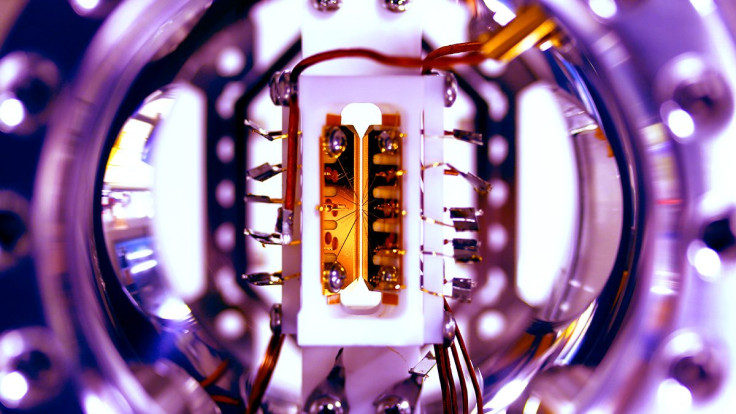Quantum Computing Breakthrough: World’s First Reprogrammable Device Created Using Trapped Ions

In what is being hailed as a significant leap in the field of quantum computing, a team of researchers from the Joint Quantum Institute (JQI) at the University of Maryland have created the world’s first programmable and reconfigurable quantum computer. The breakthrough could usher in an era of viable quantum computers capable of performing operations many orders of magnitude faster than conventional computers can.
The new device, described in the journal Nature, is made of five individual ions — charged atoms — trapped in a magnetic field, whose strength is manipulated in such a way that the ions are arranged in a line. This single file arrangement facilitates “entanglement” of the ions — wherein they are physically separate but act as if they are connected — when they are manipulated using an array of tightly focused laser beams. Depending on the operation, these ions glow in different ways, which can then be studied using dedicated detectors.
“For any computer to be useful, the user should not be required to know what’s inside,” co-author of the Nature article, Christopher Monroe, a fellow at JQI, said in a statement. “Very few people care what their iPhone is actually doing at the physical level. Our experiment brings high-quality quantum bits up to a higher level of functionality by allowing them to be programmed and reconfigured in software.”
Unlike conventional computers, which utilize bits that can exist in one of the two states — 0 or 1 — quantum computers utilize quantum bits, or “qubits,” that can exist in a state of superposition. This phenomenon, which allows qubits to exist in both states at the same time, coupled with quantum entanglement, is what gives quantum computers a significant advantage over conventional computers.
The development of quantum computers has been a goal of computer scientists and physicists ever since the idea was first floated in the early 1980s. However, one of the key hurdles researchers have faced in realizing this goal is scalability — increasing the number of qubits from a mere handful to an order of millions or billions, depending on the complexity of the task the computer needs to perform.
Here is where the new research assumes special importance. The line-based arrangement in the device allows any pair of ions to be entangled, rather than the neighbor-to-neighbor restriction other quantum architectures impose. Moreover, this “module” can be linked to other devices, either by physically moving the ions or by using photons to carry information between them.
“By directly connecting any pair of qubits, we can reconfigure the system to implement any algorithm,” lead author Shantanu Debnath, a graduate student at JQI, said in the statement. “While it’s just five qubits, we know how to apply the same technique to much larger collections.”
The researchers were able to reprogram the device, which had an accuracy of 98 percent, to run small instances of three problems that quantum computers are known to solve quickly — the Deutsch-Jozsa algorithm (with 95 percent accuracy), the Bernstein-Vazirani algorithm (90 percent), and the Quantum Fourier Transform algorithm (70 percent).
© Copyright IBTimes 2024. All rights reserved.






















